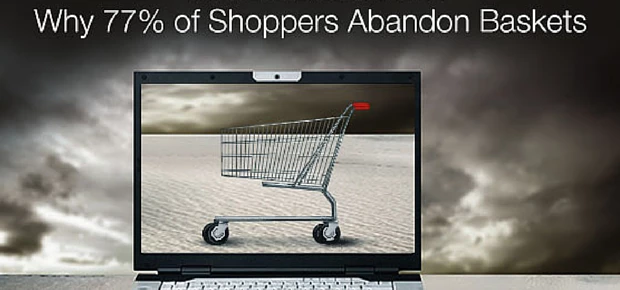
Partner Article
Why 77% of online shoppers abandon baskets
77% of e-baskets are abandoned before the sale – and the reasons can be summed up in one word: trust.
The customer journey between entering a site and clicking to pay can be ten to twelve steps long. If it’s your customer’s first time doing business with you, that’s twelve chances to cut and run. With multiple ‘panic points’ where they can jump out of the process, it’s hardly surprising that over three-quarters of shopping trips on the web result in abandoned baskets.
Of Pain and Panic
At the core of the issue is trust: the currency of the new economy according to TED, a conference and talks video sharing website. Let’s take a look at some of those panic points, and evaluate how proof of trust could turn them into opportunities.
Panic point 1: Oh no, this shop is run by two guys in a basement!
Wherever you sell, the first big panic point is when the customer realises they’ve never bought from you before. They’ve put your products in the basket – but that’s as far as it goes.
To the customer, every step in the payment process is a risk. The risk of non-delivery, of credit card fraud, of poor customer service. So job one is to reduce that perceived risk.
One method to reduce this risk involves using a widget that flags up genuine reviews of your company as the customer browses your site. That way at the same moment the customer is hesitating they have an impartial third party opinion lending the strongest endorsement possible, right there on the web page.
According to research consumers are 62% more likely to do business with you after they’ve seen a positive review. For example if your clickthroughs are stuck at a third or less the installation of a review widget throughout your site can reduce the dreaded abandoned basket scenario by making that probability more than one in two that they will purchase.
Panic point 2: What will they do with my credit card details?
Every week seems to reveal a fresh fraud in the headlines. Many years into the online shopping revolution, consumers still worry about giving an unknown company their credit card number. It’s a major barrier to payment completions.
A decent overall review rating, can drive up payment completions by helping overcome this trust issue. Even if you have the odd bad review, customers understand a score is a batting average – and act accordingly.
In fact, just by having a rating you’re showing you’re confident enough to open yourself up to criticism. Strangely, the more reviews a company has, the more positive they are likely to be overall.
Panic point 3: I’ve still got time to pull out
A third panic point happens at the last fence: the final confirmation. Here’s an idea: why not state, on that confirmation page, that you’d really like them to review you as soon as possible after they’ve received delivery of their purchase? Planting that thought changes the game. You’re moving the customer past their present worry. It brings them closer to you – and once they’ve clicked that Submit button, it’s a reason to contact them again and make an offer for their next purchase.
Remember:
77% of shoppers on the web abandon their baskets. Consumers are 62% more likely to do business with you after they’ve seen a positive review. Inviting reviews boosts consumer confidence, resulting in increased conversion rates.
Worried about the possibility of a detrimental effect from negative reviews? Don’t be. To see why, read the eGuide now: The Truth About Trust: When Reviews Turn Ugly
Just copy and paste this URL into your browser: http://bit.ly/Trust-Biz
This was posted in Bdaily's Members' News section by Jan Vels Jensen .








 We don’t talk about money stress enough
We don’t talk about money stress enough
 A year of resilience, growth and collaboration
A year of resilience, growth and collaboration
 Apprenticeships: Lower standards risk safety
Apprenticeships: Lower standards risk safety
 Keeping it reel: Creating video in an authenticity era
Keeping it reel: Creating video in an authenticity era
 Budget: Creating a more vibrant market economy
Budget: Creating a more vibrant market economy
 Celebrating excellence and community support
Celebrating excellence and community support
 The value of nurturing homegrown innovation
The value of nurturing homegrown innovation
 A dynamic, fair and innovative economy
A dynamic, fair and innovative economy
 Navigating the property investment market
Navigating the property investment market
 Have stock markets peaked? Tune out the noise
Have stock markets peaked? Tune out the noise
 Will the Employment Rights Bill cost too much?
Will the Employment Rights Bill cost too much?
 A game-changing move for digital-first innovators
A game-changing move for digital-first innovators